If you are getting started with a pet crayfish, it’s pretty important that you know proper pet crayfish care. You don’t want to end up like I did when I first started keeping crayfish—with crayfish fighting in a tank too small, and eating the other fish.
A Pet Crayfish Care Guide for Anyone Getting Started with a Pet Cray
In this pet crayfish care blog, I’ll talk about:
- Finding the right fish tank aquarium for your crayfish
- Preparing your tank
- Buying a crayfish
- Feeding your crayfish
- Selecting other fish for your tank
So, what happened to me anyway?
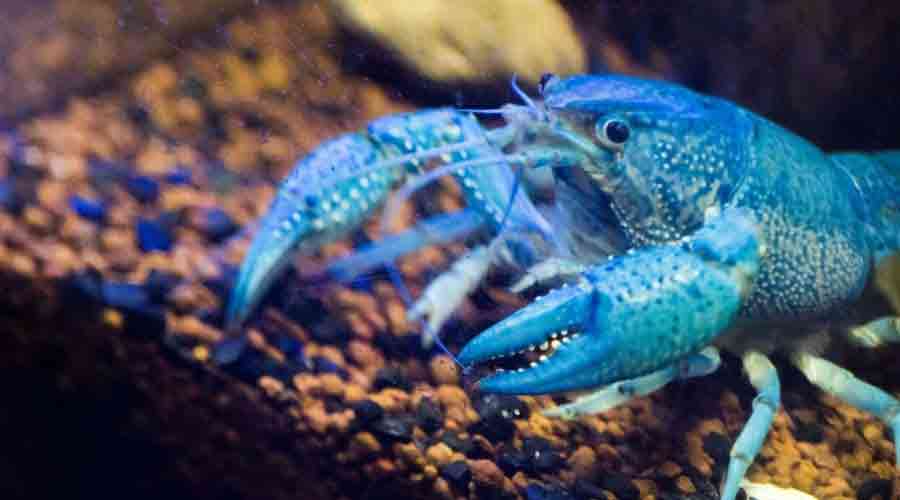
Well, when I first started with my pet crays, I put two pet crayfish in one 10-gallon tank, a tank that was too small, basically. And well, one of them literally ate the other. It was brutal. I mean, nothing sucks worse than walking in from work one day and seeing one of your crayfish being eaten alive.
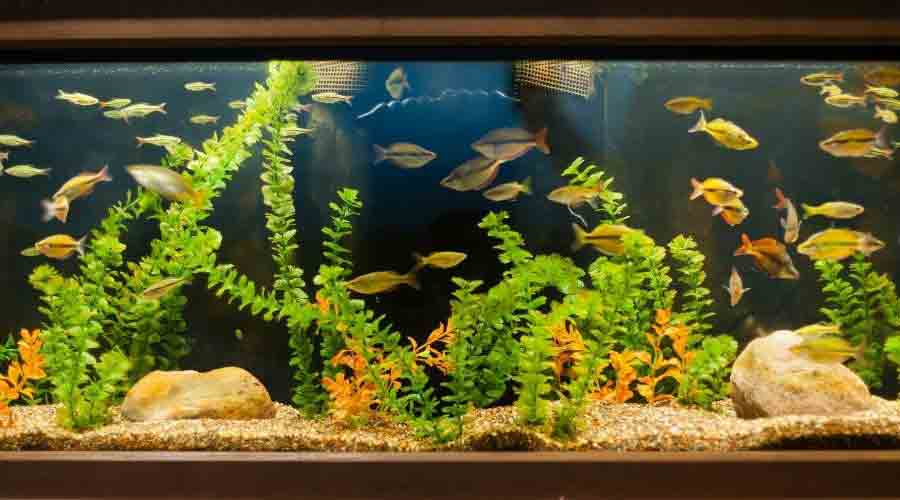
1. Finding the Right Tank for Your Crayfish
Finding the best crayfish tank for your situation and planning your aquarium is essential.
When I got started, I, of course, bought a 10-gallon tank. Which probably would have been fine had I only kept one crayfish, aka “mudbug,” but, I decided to add another cray. That is where I made a mistake.
When you start shopping for your tank, think about the plan, both short-term and long-term for your tank.
If you know you will only have one crayfish, and maybe just a few other fish, then honestly I’d suggest a 20-gallon fish tank. Because in all honesty, and through experience, I’ve seen that a 10-gallon tank is just too small.
However, if you plan on adding more fish and a second pet crayfish to the mix, you will probably want to get a bigger fish tank.
Personally, I suggest starting with a 50 to 55-gallon tank at least—55-gallon fish tank like this one.
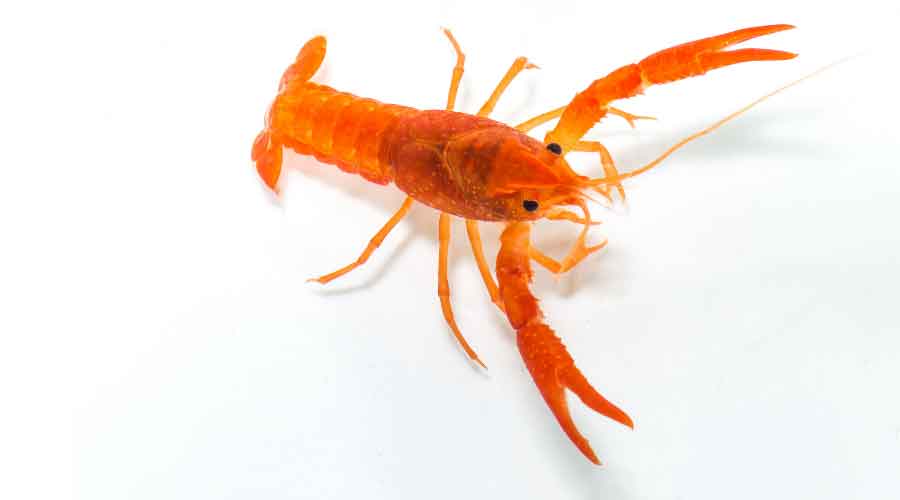
2. Pet Crayfish Care: Preparing the Tank For Your Crayfish
When you purchase your tank for your pet crayfish, you’ll need to prep it before you can add your crayfish or any other fish to the tank.
The first thing, of course, is adding the gravel to the tank, ornaments, and preferably a hideout for your crayfish.
Crayfish like to burrow and will also need a place to hide when they shed their exoskeleton, or “molt.”
Then, you want to simply add water conditioner (should come with tank kit) to your water, and pour it into the tank.
Make sure the water temperature is between 74 to 82 degrees Fahrenheit.
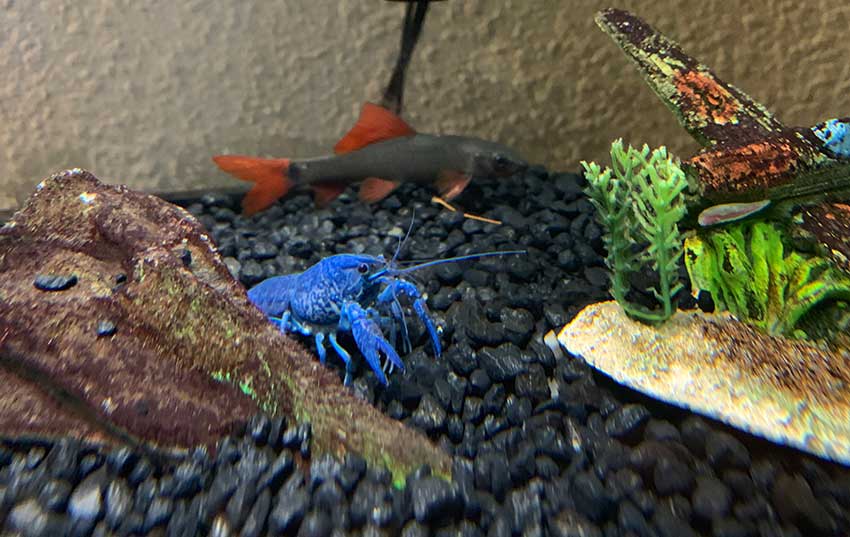
Next, you will need to cycle your tank. This is definitely one of the most important steps in the entire process. It absolutely must be done.
You can’t simply put water into a fish tank and add fish or crayfish.
Cycling the tank basically sets up a natural system to remove toxins within your tank.
Without this natural cycle, the water in a fish tank becomes unhealthy for fish and other animals.
In short, cycling the tank is a way of neutralizing the waste that comes about from your fish and crayfish peeing and pooping.
I mean come on, would you want to swim in your pee and poop?
Pet Crayfish Care: Cycling Your Fish Tank
Here’s the way I cycle my tank, although there are different ways to do this.
For a 20-gallon tank, I would put three to four hardy freshwater fish (fish that can live in rough water conditions) in the tank.
Next, you’ll want to feed these fish a little food every couple of days. If you feed them too much, the rotten food will make your tank very dirty. It can lead to algae overgrowth and make the tank very nasty. So be mindful of this.
With a water tester, that may come with your tank, otherwise, you can buy a water tester, you’ll want to test the water regularly until your water is safe for your fish (read the directions on the strips).
Normal Water Levels for a Fish Tank
- Normal pH range: 6.5 to 8.2
- Normal Chlorine and Chloramine: 0.0 mg/L
- Normal ammonia levels: 0.0 to 0.25 mg/L
- Normal nitrite levels: 0.0 to 0.5 mg/L
- Normal nitrate levels: 0 to 40 mg/L
- Normal hardness: 100 to 250 mg/L
- Normal alkalinity: 120 to 300 mg/L
- Normal temperature: 74 to 82 degrees Fahrenheit
Note, once your tank is set up and ready to go. You’ll want to change 25% of the water every two weeks (frequency can vary) and replace the water filter. It’s pretty friggin’ easy, actually. Just be consistent in order to keep your tank and the life in it healthy.
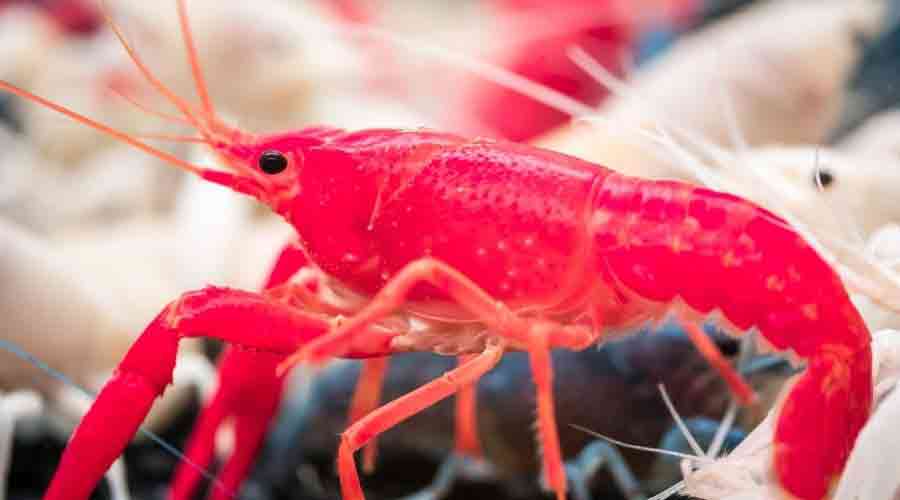
Other Tips for Setting Up Your Crayfish Tank
Other tips for setting up your crayfish include are listed below:
- Make sure you keep your fish tank out of direct sunlight
- Again, don’t overfeed your fish or it may lead to the overgrowth of algae
- Remember, one inch of fish per gallon of water
- Don’t mix different species of crayfish
- It may be best to keep fake plants in your tank as crayfish are known for destroying real plants
3. Buying Your Pet Crayfish
Once your fish tank is set up, and the water is cycled, then you can add your crayfish.
You can buy crayfish online if would you like, Amazon even sells them. However, you can also buy your crayfish at select local pet stores. I will say though, not every pet store sells them and you want to make sure that you get them from a reputable source.
Personally, I like to start with baby crayfish and watch them grow.
4. Pet Crayfish Care: Knowing What and When to Feed Your Crayfish
Crayfish are simple little creatures. They aren’t picky eaters.
Actually, crayfish are omnivores. They eat both plants and animals. These guys are scavengers, and boy do they love to eat.
In the wild, crayfish eat plankton, algae, worms, and whatever else they can get their claws on. But as pets, I’ll simplify this for you. Although you could feed them veggies and such, just buy the little guys a bag of sinking wafers (made of algae) or feed them raw veggies like peas, cucumber, and carrots every now and then. They’ll love you for it.
As far as a feeding schedule and pet crayfish care, I feed mine every couple of days and it keeps him pretty happy. Mine are adults, but when your crayfish are younger, you’ll want to feed them every day.
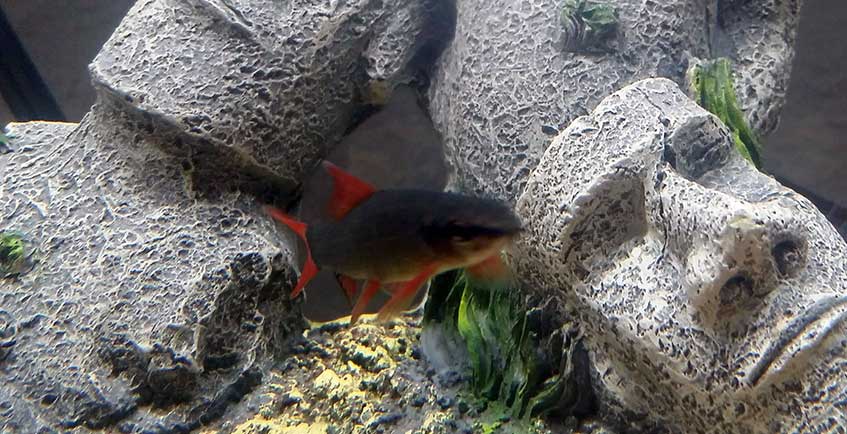
5. Selecting Other Fish for Your Fish Tank
Here’s where pet crayfish care can get tricky.
Remember earlier when I said that crayfish are omnivores? Well, yes, so they will literally eat anything they can. This means your other freshwater fish, too.
Having said this, you must select the right tank mates for your crayfish, or else they will get eaten.
If you put fish that feed on the bottom of the tank, snails, or slow-moving fish, there is a very good chance they’ll get eaten. I again learned this through experience, too. Chomp!
Also, note that some of the fish mentioned below will require large tanks.
Good Fish Tank Mates for Your Crayfish
- Hatchet Fish
- Red Tail Shark
- Rainbow shark (a personal favorite)
- Various tetras
- Rosy red minnows
Recap of Pet Crayfish Care
In this blog, I talked about getting started with a crayfish and caring for the little guy.
I covered how to select the right tank. Remember to always consider the size of the tank, especially if you plan on having friends for your pet crayfish.
I also discussed getting your tank set up correctly so that your crayfish and other fish can live healthy lives in the tank. Because if you don’t set your tank up correctly, the water will become toxic.
I suggested a few places to buy crayfish, and how to go about feeding your crayfish.
And as one of the most important parts of pet crayfish care, I discussed which fish you can keep in the tank with your crayfish.
Good luck with your pet crayfish!

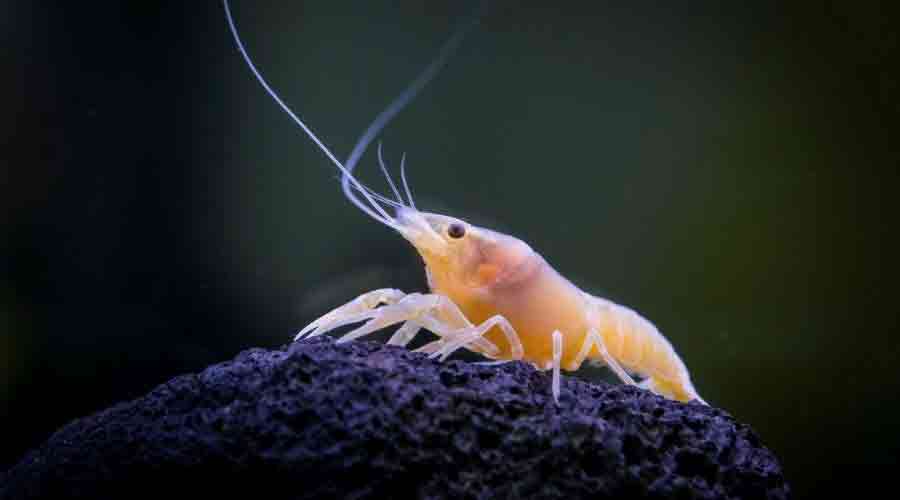
Pingback: Freshwater Crayfish Care: Tank Mates – gsnote.org